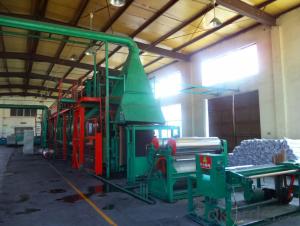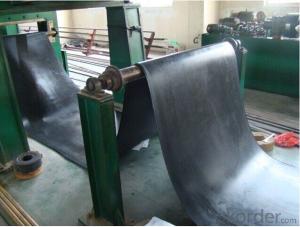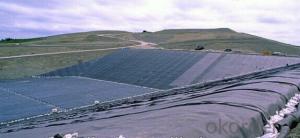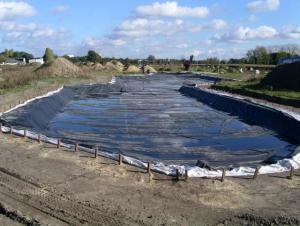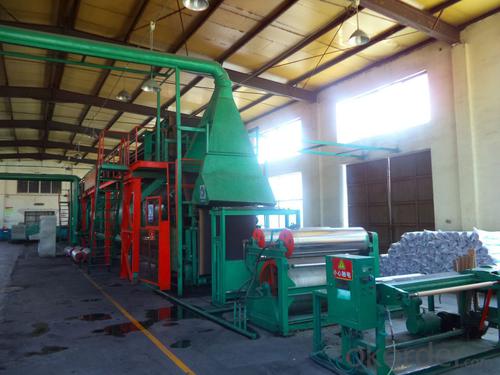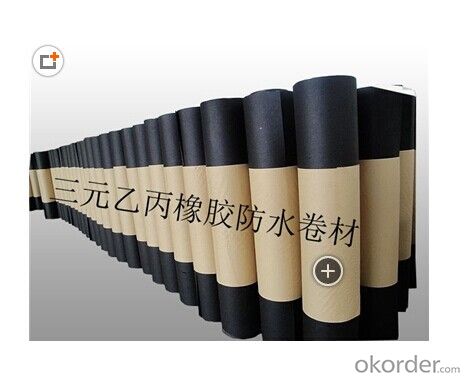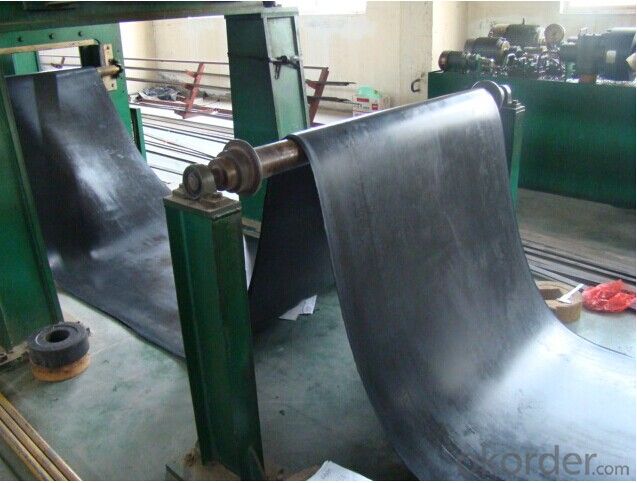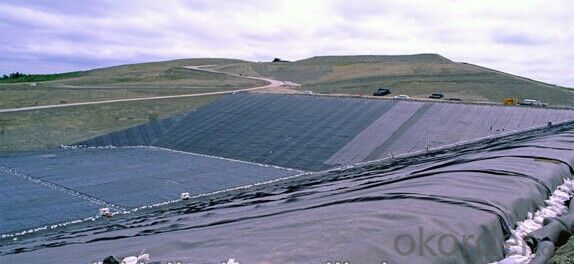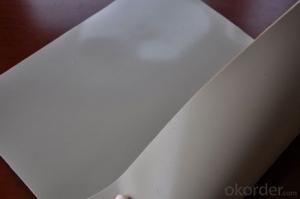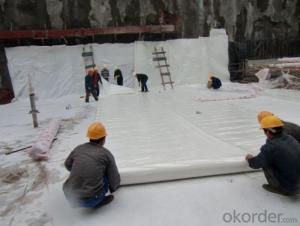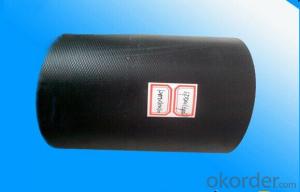No1 EPDM Rubber Roofing Waterproof Membrane
- Loading Port:
- Qingdao
- Payment Terms:
- TT or LC
- Min Order Qty:
- 5000 m²
- Supply Capability:
- 300000 m²/month
OKorder Service Pledge
OKorder Financial Service
You Might Also Like
EPDM Waterproof Membrane
Introduction for EPDM Waterproof Membrane
This waterproof coiled material is of high elasticity with best performance among high polymer waterproof coiled material in the world.It is also the most typical one in the world.Waterproof coiled material made of ternary ethylene-propylene rubber of ‘CHEN SHENG’ brand is produced with the use of the most advanced continuous extrusion and vulcanization technology and related equipments which are specially designed for production of such product.It is good in compactness,without bubble and performance difference in length and breadth,performances reach or exceed the demands of GB18173.1-2012 standard.
Characteristics for EPDM Waterproof Membrane
1.the excellent anti-aging, in the long term light, humidity, cold use of the natural environment, small changes in physical properties, used in the temperature. From -50 degree Celsius to +150degree Celsious.
2.with outstanding ozone resistance, resistance to ultraviolet and atmospheric corrosion of many chemical corrosive substances.
3. high tensile strength, high elongation, high flexibility, capable of sustaining a puncture of hard material, good anti-crack and deformation and give full play to extend the performance, playing the role of waterproofing.
4.long lifetime, high durability can achieve more than 25 years.
5.the cold construction operation, no environment pollution and simple operation.
Application for EPDM Waterproof Membrane
1) Roofs, Basement, Toilet
2) Industrial and civil building waterproofing
3) Geo-synthetic liner for swimming pool, channels, irrigation system
4) Especially suit for projects with high requirements in durability, anti-corrosion and deformation
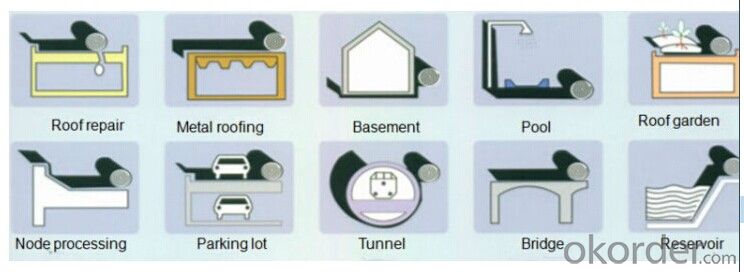
Specification for EPDM Waterproof Membrane
Item | Thick(mm) | Width | Length(m) | Color |
Spe | 1.0—2.0 | 1.2m/2m/3m/4m | 20 | Black |
Deviation | -1 +15 | --1 | Multicolor |
Technical Sheet for EPDM Waterproof Membrane
EPDM Waterproof Membrane ASTM Standard : D-7465 | ||||
Property | Test Method | Units | Mininum ASTM | |
D-7465 | ||||
Sl | Eng | |||
Specific Gravity | ASTM D-792 | gm/cc | 1.1 | 1.1 |
Unit Weight | ASTM D-751 | kg/m2 | 1.3 | 0.27 |
Thickness Type 1 | ASTM D-412 | mm(in) | 1.02 | 0.04 |
Tensile Strength. Die C | ASTM D-412 | Mpa(psi) | 9 | 1305 |
Ultimate Elongation,Die C | ASTM D-412 | % | 300 | 300 |
Tear Resistance,Die C | ASTM D-624 | Kn/m(lbf/in) | 26.27 | 150 |
Puncture Resistance | ASTM D-4833 | N(lbs) | 133 | 30 |
Shore A Durometer | ASTM D-2240 | 65-10 | 65-10 | |
Ozone Resistance | ASTM D-1149 | No Crack | No Crack | |
Multiaxial Elongation | ASTM D-5617 | % | 100 | 100 |
Heat Aging 28 days at 240 degrees | ASTM D-573 | |||
Tensile Strength, Die C | ASTM D-412 | MPa(psi) | 8.3 | 1205 |
Ultimate elongation, Die C | ASTM D-412 | % | 200 | 200 |
Tear Resistance, Die C | ASTM-624 | Kn/m(lbf/in) | 21.9 | 125 |
Accelerated Aging Xenon Arc | ASTM G-155/G-151 | Pass | Pass | |
Brittleness Point | ASTM D-2137 | -45 °C | -49 °C F | |
Water Absorption | ASTM D-471 | % | +8,-2 | +8,-2 |
Water Vapor Permeability, max | ASTM E-96 | Permils | 2.0 | 2.0 |
Linear Dimensional Change,max | ASTM-D-1204 | % | +/-1.0 | +/-1.0 |
Chronic Toxicity Screening | EPA/600/4-89/001 | Method 1000.0 | Pass | Pass |
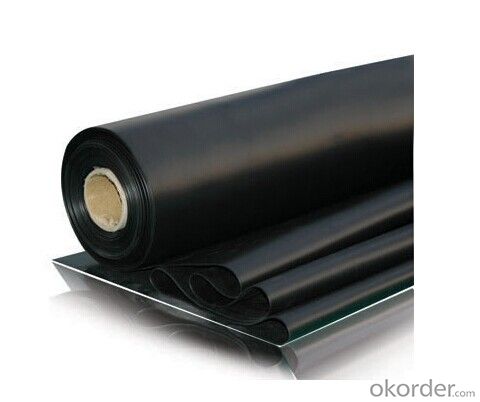
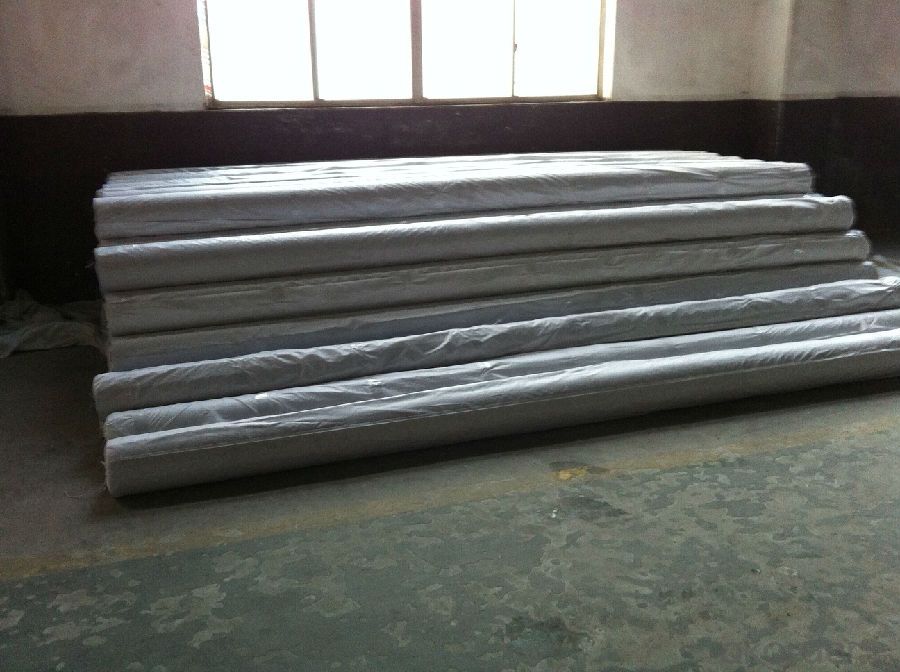
Vulcanization Production Line
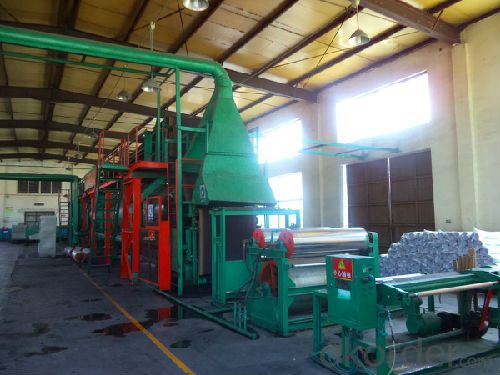
Weldable Production line
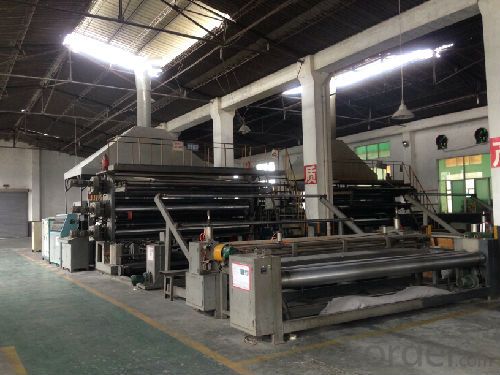
FAQ:
Can you produce 4m width?
Yes, no problem for us. We have four bases in China, largest one in this field.
How many quantity in one 20'' container for 1.2mm and 1.5mm?
480rolls, 11520m2 for 1.2mm and 400rolls, 9600m2 for 1.5mm
Can you provide free samples?
Yes, our samples are free, but express fees usually on buyer's account.
- Q: Can a waterproofing membrane be used on gypsum board surfaces?
- Yes, a waterproofing membrane can be used on gypsum board surfaces. This membrane helps to protect the gypsum board from moisture, preventing water damage and increasing its lifespan.
- Q: Does a waterproofing membrane provide any insulation benefits?
- No, a waterproofing membrane does not provide any insulation benefits. The primary purpose of a waterproofing membrane is to protect the underlying structure from water damage by preventing water from penetrating through the surface. It acts as a barrier to keep water out and maintain the integrity of the structure. Insulation, on the other hand, is designed to regulate temperature and prevent heat transfer. It helps to maintain a comfortable indoor environment by reducing the transfer of heat between the interior and exterior of a building. Insulation materials are typically installed within the walls, floors, or roofs to provide thermal resistance and improve energy efficiency. While both waterproofing and insulation contribute to the overall performance and durability of a building, they serve different purposes. Waterproofing focuses on keeping water out, while insulation focuses on regulating temperature. Therefore, it is important to use both waterproofing and insulation materials in appropriate areas to ensure the best results.
- Q: Can a waterproofing membrane be used for a podium deck coating?
- Yes, a waterproofing membrane can be used for a podium deck coating. The membrane is designed to prevent water penetration and provide a protective barrier, making it suitable for waterproofing applications such as podium deck coatings.
- Q: Can a waterproofing membrane be used for a residential building facade?
- Yes, a waterproofing membrane can be used for a residential building facade. It can provide protection against water infiltration, preventing moisture damage to the structure and enhancing its durability. Additionally, using a waterproofing membrane can help maintain the aesthetic appearance of the facade by preventing staining or discoloration caused by water penetration.
- Q: Can a waterproofing membrane be used for schools or universities?
- Certainly, schools or universities can definitely utilize a waterproofing membrane. In fact, these membranes are widely employed in various construction projects, including educational institutions, to safeguard the building from water damage. They are typically applied to the outer surfaces of the structure, such as roofs, walls, or foundations, in order to establish a barrier that prevents water infiltration. By implementing a waterproofing membrane, schools and universities can ensure that their buildings remain dry and free from water-related issues such as leaks, mold growth, or structural damage. This not only helps to maintain the integrity and longevity of the building, but also provides a secure and comfortable environment for students, staff, and visitors. Moreover, waterproofing membranes can also be utilized in areas such as bathrooms or wet laboratories to hinder water seepage, which is particularly crucial in educational settings where heavy foot traffic and frequent water usage are common. All in all, integrating a waterproofing membrane in schools or universities is a proactive measure to safeguard the infrastructure, enhance durability, and foster a conducive learning environment.
- Q: Can waterproofing membranes be used on concrete planters?
- Yes, waterproofing membranes can be used on concrete planters to prevent water leakage and protect the concrete from moisture damage.
- Q: Are waterproofing membranes resistant to saltwater corrosion?
- Yes, waterproofing membranes are generally resistant to saltwater corrosion. They are designed to withstand harsh environmental conditions, including exposure to saltwater, without deteriorating or being affected by corrosion.
- Q: Can waterproofing membranes be used on concrete planters?
- Yes, waterproofing membranes can be used on concrete planters to prevent water leakage and protect the concrete from moisture damage.
- Q: Can a waterproofing membrane be used in parking garages?
- Yes, a waterproofing membrane can be used in parking garages. Parking garages are exposed to various weather conditions, including rain and snow, and are often subjected to heavy vehicular traffic, which can lead to moisture infiltration and damage to the structure. Therefore, it is crucial to install a reliable waterproofing system to protect the parking garage against water penetration and potential structural deterioration. A waterproofing membrane is an effective solution for parking garages as it acts as a barrier against water and moisture. It is typically made of materials such as modified bitumen, PVC, or EPDM, which are durable and resistant to water intrusion. The membrane is applied to the surface of the concrete structure, creating a protective layer that prevents water from seeping through. The waterproofing membrane not only safeguards the parking garage against water infiltration but also helps to extend the lifespan of the structure. By preventing moisture from penetrating the concrete, it reduces the risk of corrosion, reinforcing steel deterioration, and the formation of cracks. This ultimately helps to maintain the structural integrity of the parking garage and avoid expensive repairs or replacements in the future. Additionally, a waterproofing membrane can also provide added benefits such as resistance to chemicals, UV radiation, and abrasion. This makes it an ideal solution for parking garages that are exposed to harsh environmental conditions and heavy traffic. In summary, a waterproofing membrane is highly recommended for use in parking garages as it offers reliable protection against water infiltration, helps to maintain the structural integrity of the garage, and extends its lifespan.
- Q: Can a waterproofing membrane be used for pond or pool applications?
- Yes, a waterproofing membrane can be used for pond or pool applications. These membranes are specifically designed to create a water-tight barrier, making them suitable for preventing leaks and ensuring the structural integrity of ponds and pools.
Send your message to us
No1 EPDM Rubber Roofing Waterproof Membrane
- Loading Port:
- Qingdao
- Payment Terms:
- TT or LC
- Min Order Qty:
- 5000 m²
- Supply Capability:
- 300000 m²/month
OKorder Service Pledge
OKorder Financial Service
Similar products
Hot products
Hot Searches
Related keywords
